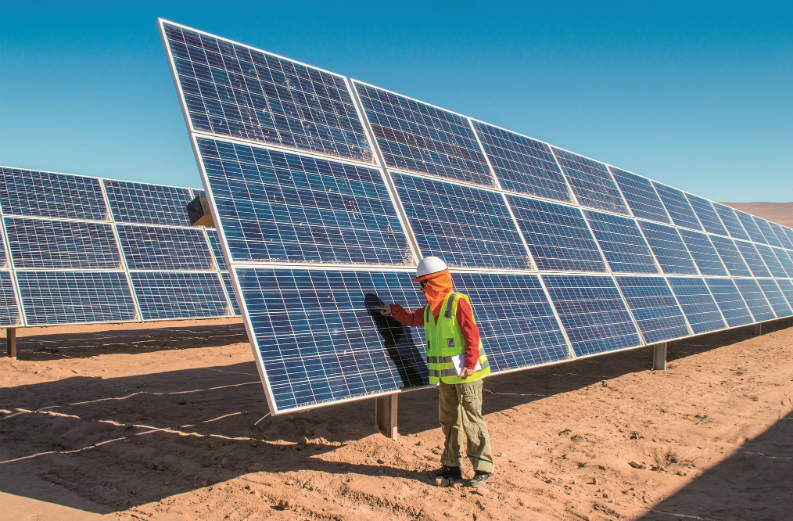
Congratulations on the new product, I haven’t had a chance yet to test it out in the field but I already like the name (in Spanish it translates as ‘Reason’). Could you introduce the RaZON+ and tell us a bit about how it works?

The RaZON+ is an ALL-IN-ONE Solar Monitoring System that was developed and engineered by a dedicated team at Kipp & Zonen. Apart from the Spanish meaning we also chose the name because ZON means sun in the Dutch language.
The system gives the three components of solar radiation; direct, diffuse and global. Direct and diffuse are measured and global is calculated, using the time and location data from the integrated GPS receiver. The on-board microcontroller performs the calculations and logs the data. It also allows for communication through four-wire RS-485, Ethernet or the optional Wi-Fi.
The RaZON+ is more resistant to soiling than traditional systems, mainly because of the way the PH1 pyrheliometer is designed. The PH1 and the PR1 pyranometer are Smart instruments with a fast response that can follow rapidly changing levels of irradiance. However, there is also the option to go for even higher performance, using a SHP1 first class pyrheliometer and a SMP10 secondary standard pyranometer (with an adapter kit).
Sometimes, there is a divide between pre-construction and operational measurements. For which type of customers and in what situations would you recommend to use RaZON+?
We would advise using the RaZON+ as an accurate and cost-efficient solution for solar energy and meteorology applications. For solar energy we expect it to be deployed on both prospecting and operational sites, where the low maintenance and ease of use are an added benefit. For prospecting, the possible absence of a logger infrastructure is no problem for the RaZON+ as it comes with an on-board data storage that does not need any additional setup.
RaZON+ also gives you all of the three components of solar irradiance which enables you to find the best installation angle for your panels depending upon the typical sky conditions. For overcast conditions there is only diffuse radiation and horizontally positioned panels are optimal; whereas, for clear skies, panels normal to the direct sun are ideal.
For operational sites the option to connect the RaZON+ directly to the SCADA system, either through Modbus® RS-485 or Ethernet, is attractive. An auxiliary Modbus® input enables the connection of compatible plane-of-array pyranometers, PV panel temperature sensors and all-in-one weather stations.
I like the idea of a system that comes with an integrated data logger. If this arrangement is flexible enough and takes care of the customer requirements, it is a very effective way of minimising interface problems within the system (they can often take a lot more time than one budgeted for!). What are the main improvements when compared with a ‘more traditional’ measurement approach?
The main improvements are easy connectivity during installation and operation. During installation there are less cables involved, just serial data and 24 VDC power. For operation it is because the system can be remotely accessed to check data and status. There is also the possibility for a more sophisticated interaction between the Smart instruments and the Smart sun tracker in future versions of the system.

Are there any drawbacks?
A drawback could be in transferring from the old type of infrastructure, with analogue signals and a separate data logger, to an all-digital new one.
In the Atacama Desert, we often work with stations that do not have regular maintenance due to their remote location, How do you ensure that the soiling is minimised, and how much maintenance does the system require?
The unique design of the PH1 pyrheliometer has no front window for the collimation tube and a diffuser in front of the thermopile radiation sensor. This reduces sensitivity to soiling and has been demonstrated in testing. In addition, the detector assembly is easily removed from the collimation tube without tools, for cleaning the diffuser.
Because the shaded PR1 pyranometer does not see the direct beam from the sun, and measures diffuse light from all directions, it is less susceptible to soiling particles blocking part of the light through the dome. PR1 has a similar diffuser and thermopile sensor to the PH1.
There is no need to change any desiccant as both instruments are sealed. The expected maintenance interval is much longer than with traditional systems.
One of the main issues to consider with measurements is the quality of the data and the uncertainties related to the measurements. For the technical advisors like us (or even technical departments within a company) it is often clear what the best ways of measuring are, but the reality of corporate life is that it is difficult to justify spending money if the investment does not reflect a reduction of uncertainty which makes the project more valuable. What sort of studies have you done to help with such decisions?
One of the main reasons RaZON+ can be interesting is that it offers a very simple and cost-effective way to get good quality measurements. Additionally, the system offers an output of the sun position that can be used for other applications, such as to control PV panel trackers or solar concentrators, which can reduce costs.
We have also introduced our Suncertainty mobile app that calculates the uncertainty of global irradiance measurements by different Kipp & Zonen pyranometers under varying measurement conditions. This includes the RaZON+ and you can see that, due to the calculation of global from the measurement of direct and diffuse, the directional error is a lot smaller. This reduces the uncertainty under clear sky conditions when the sun is closer to the horizon. Suncertainty shows that a RaZON+ can lower the uncertainty of the whole solar measurement chain.